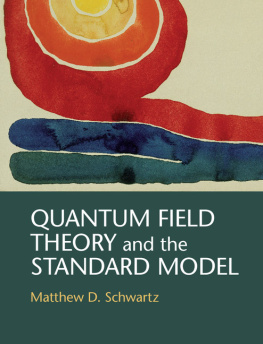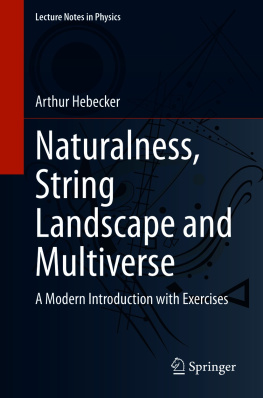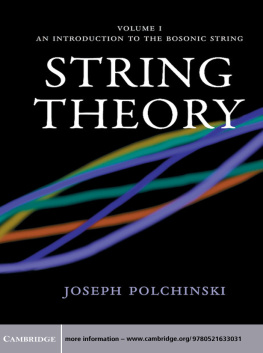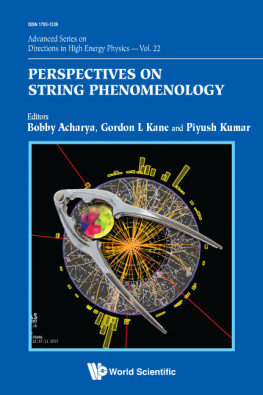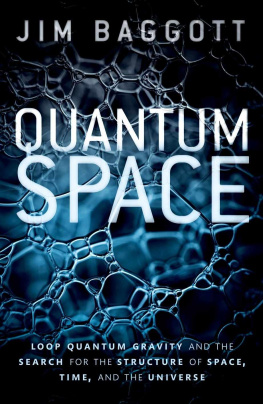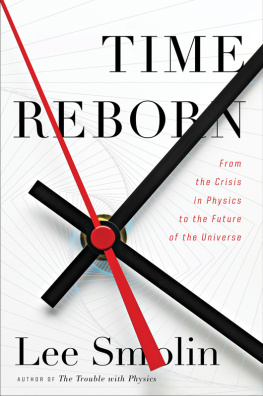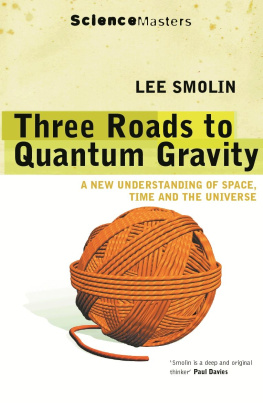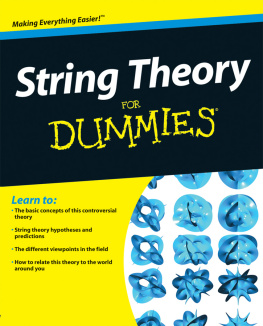Praise for Not Even Wrong
Peter Woit presents an authoritative, sobering, and very readable history of a scientific and sociological phenomenon that is largely unprecedented in the history of science. From a physics perspective, what is known as string theory remains primarily the hope for a theory. Nevertheless it has dominated theoretical particle physics as well as the popular consciousness as few other notions have, all the while without ever making a single falsifiable prediction about nature! Readers interested in a more balanced understanding of modern theoretical physics are sure to benefit.
LAWRENCE KRAUSS, author of The Physics of Star Trek, and Hiding in the Mirror: The Mysterious Allure of Extra Dimensions, from Plato to String Theory and Beyond
Not Even Wrong is an authoritative and well-reasoned account of string theorys extremely fashionable status among todays theoretical physicists. I regard it as an important book.
ROGER PENROSE, author of The Road to Reality
[A]rgue[s] passionately that string theory has played itself out. In the two and a half decades since it first captivated physicists, despite thousands of published papers and the expenditure of billions of dollars, there is no proof whatsoever that string theory is correct. Not one prediction of the theory has been experimentally testable.
Boston Globe
Woit offers some intriguing ruminations on the relationship between physics and mathematics....
New York Times Book Review
[Woit] explores the interface between maths and physics, concluding that mathematicians view string theory as physics and physicists regard it as mathematics. The two communities are at odds over whether string theory is a series of abstract puzzles or whether it says something about the real world. The idea that beauty can point to scientific truth served Einstein well. Sadly for science, it may have misled a later generation of theoretical physicists.
The Economist
[L]ively and entertaining.
Discover magazine
The story of how a backwater of theoretical physics became not just the rage but the establishment has all the booms and busts of an Old West mining town.
Scientific American
[A] tightly argued, beautifully written account....
Publishers Weekly
[A] call to arms for physicists to pursue multiple paths in search of truth, not funding.
New Scientist
That string theory abandoned testable prediction may be its ultimate betrayal of science.
Wall Street Journal

Copyright 2006 by Peter Woit
Hardcover published in 2006 by Basic Books
A Member of the Perseus Books Group
Paperback published in 2007 by Basic Books
All rights reserved. No part of this book may be reproduced in any manner whatsoever without written permission except in the case of brief quotations embodied in critical articles and reviews. For information, address Basic Books, 387 Park Avenue South, New York, NY 100168810.
Books published by Basic Books are available at special discounts for bulk purchases in the United States by corporations, institutions, and other organizations. For more information, please contact the Special Markets Department at the Perseus Books Group, 2300 Chestnut Street, Suite 200, Philadelphia, PA 19103, or call (800) 255-1514, or e-mail .
Library of Congress Cataloging-in-Publication Data
Woit, Peter.
Not even wrong : the failure of string theory and the search for unity in physical law / Peter Woit.
p. cm.
Includes bibliographical references and index.
ISBN: 978-0-465-00363-1
1. String models. 2. Supersymmetry. 3. Quantum theory. 4. Superstring theories. 5. Physical laws. I. Title.
QC794.6.S85W65 2006
539.7'258--dc22
2006013933
07 08 09 / 10 9 8 7 6 5 4 3 2 1
FOR ELLEN
CONTENTS
Throughout the year 2005, physicists all over the world celebrated the centennial of Albert Einsteins revolutionary discoveries of 1905, which included the special theory of relativity and the quantum nature of light. These discoveries led quickly to dramatically new and powerful physical theories, and continuous progress was made throughout much of the twentieth century on using them to understand the fundamental nature of matter and physical forces. By 1973, an extremely successful theory of elementary particles and their interactions was in place, a theory that soon became known as the standard model.
After 1973, life grew much more difficult for particle physicists as evidence mounted that their field was in danger of becoming a victim of its own success. The standard model left many questions about fundamental physics still open, but new generations of experiments produced results that agreed with the model precisely, giving no hints about where to look for something better. Particle physics entered a period quite unlike any in its earlier history, one that continues to this day. In a few years, results will become available from a new, higher-energy particle accelerator now under construction near Geneva. There is some reason to hope that these will finally give some indication of how to get beyond the standard model, but this is far from a sure thing.
Throughout the late seventies and early eighties, particle theorists explored a wide range of new ideas for how to better understand and extend the standard model. One of these was rather radical, since it involved replacing the whole notion of pointlike elementary particles by one-dimensional objects that acquired the name strings. In this string theory, the strings were supposed to be so small that they appeared to be points as far as all feasible experiments were concerned. In order for strings to look at all like known particles, a more complicated version of string theory called superstring theory was required.
The main motivation behind superstring theory was that it held out hope of being able to address one of the questions the standard model left unanswered, that of how to deal with the gravitational force. Einsteins general relativity provided a simple and beautiful geometrical theory of gravity, but technical problems arise when one tries to combine this with the quantum-theoretic principles on which the standard model is based. Initially, superstring theory garnered little attention, and only a very small number of physicists worked on it. This changed dramatically after the summer of 1984, a moment that superstring theorists now refer to as the First Superstring Theory Revolution.
At that time, a technical calculation showing that certain potential problems canceled in very specific cases attracted the attention of Edward Witten, the leading figure in particle theory. He began intensively working on superstrings, enthusiastically promoting the idea and helping it receive wide attention. Within a year or so, a large number of theorists joined him, and superstring theory quickly became the dominant topic of research in the field.
Particle theory has a long history of being successfully pursued in a somewhat faddish manner, partly due to the influence of unexpected experimental results. Certain new ideas get a lot of attention, leading in a short period either to significant progress, or, more commonly, to abandonment as the community moves on to the next thing. Superstring theory broke this pattern dramatically, leading the field into a period with no real historical parallel. From the beginning, there was both no experimental evidence for superstrings and various obvious problems in the way of ever being able to use them to make experimental predictions. The theory required postulating the existence of many extra unobserved dimensions, and by different choices of the properties of these extra dimensions, one could get just about anything one wanted.
Next page

